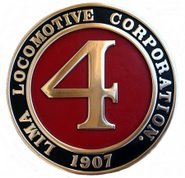Like most aspects of our 21st century lives, railroads have found ways to mechanize tasks that once to require back-breaking labor. Tie replacement is one such task.
 "There's a lot less back work now. The Union Pacific spends money for equipment so we can get in and get out and don't disrupt the traffic," Union Pacific foreman Dean Barber told the Craig Daily Press in May 2007. "I give credit to the old timers. They busted their backs working on the railroad."
"There's a lot less back work now. The Union Pacific spends money for equipment so we can get in and get out and don't disrupt the traffic," Union Pacific foreman Dean Barber told the Craig Daily Press in May 2007. "I give credit to the old timers. They busted their backs working on the railroad."The Union Pacific Railroad has a track-mounted machine called the TKO. After specialized track machines remove the spikes, the TKO travels down the rail, removing ties marked for replacement.
"Clamps grasp the railheads and hydraulic jacks push off the ground, lifting the rails from the ties," explained Dan's Depot: The Coast Line in Union Pacific maintenance-of-way gallery. "Then the hydraulic arm grabs the old tie and pulls it straight out, leaving it alongside the tracks."
Following the TKO are other speicialized machines that lift the track that allow workers to insert tie plates. Then spiking machines come a long, "rattling away like machine-guns."
"Oh, just in case you were wondering, we replace an average of 2,700 ties per day! The record is 5,000!" a UP worker told Amtrak conductor and student engineer Dan Klitzing in 1998.
I doubt the El Dorado Western Railway will acquire a TKO tie replacement machine any time soon.
And 2,700 ties per day? We pat ourselves on the back when we replace five in a day (our current record)!
The EDWR handles tie replacement the old fashion way, with lots of "back work!"
 After replacing three missing bolts in the joiner bar, Steven Karoly (left) and Ed Cunha pounded, pried and kicked until the rotten tie could be pulled from under the track on the old Southern Pacific Placerville Branch rail line near Blanchard Road. Meanwhile, Keith Berry tightened the joiner bolts.
After replacing three missing bolts in the joiner bar, Steven Karoly (left) and Ed Cunha pounded, pried and kicked until the rotten tie could be pulled from under the track on the old Southern Pacific Placerville Branch rail line near Blanchard Road. Meanwhile, Keith Berry tightened the joiner bolts.


No comments:
Post a Comment